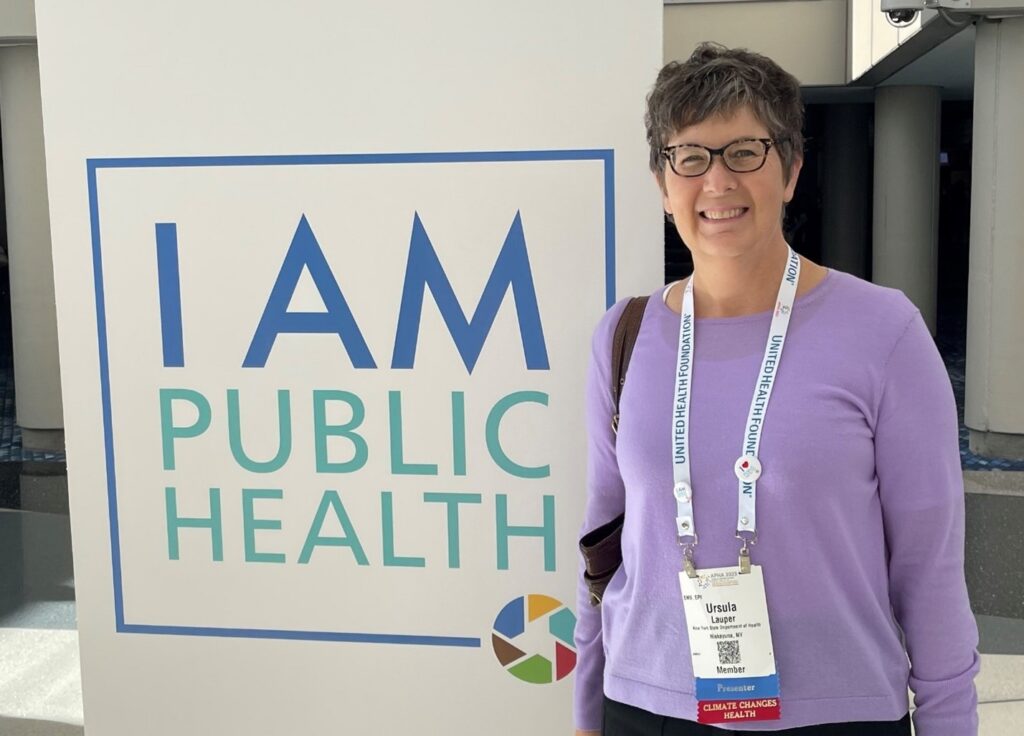 On University at Albany Week: Why is legionnaire’s disease on the rise?
On University at Albany Week: Why is legionnaire’s disease on the rise?
Ursula Lauper, clinical assistant professor in the School of Public Health, explores the data to provide an answer.
Ursula Lauper is Chief of the Water Systems Control and Analysis section within the NYS Department of Health Bureau of Water Supply Protection. In this role, she oversees statewide protections against Legionella and leads a variety of research and programmatic activities on Legionella and private wells. Lauper’s research investigates topics including environmental health, waterborne illness and outbreak investigation, legionella, private wells, climate change and health and the intersection of society, environment and health. Lauper teaches undergraduate and graduate courses in the Department of Environmental Health Sciences at UAlbany’s School of Public Health. She is the 2024 recipient of the American Public Health Association Environment Section’s Distinguished Service Award.
Rise in Legionnaires’ Disease
Legionnaires’ disease is rising globally. In the U.S., New York carries the highest disease burden and is experiencing the fastest increase in the country.
This severe form of pneumonia is caused by inhaling the pathogenic bacteria Legionella, which can multiply in building water systems and spread through the air.
Sources of the bacteria are well known. Yet, the global increase in disease has been a puzzle.
To explore this question, our collaborative team examined trends in atmospheric sulfur dioxide levels, Legionnaires’ disease incidence, and the role of cooling towers in harboring Legionella. Our results suggest that declining atmospheric sulfur dioxide levels might be driving the global rise in Legionnaires’ disease.
Legionella are sensitive to acidity and perish quickly in low-pH conditions. Thanks to legislation designed to cut sulfur dioxide emissions, the atmosphere has become less acidic, with major benefits for human and environmental health. However, with less sulfur dioxide in the atmosphere, water droplets emitted from cooling towers and other water systems are also less acidic, making it easier for resident Legionella to survive, become airborne and remain viable as they spread.
Using data on Legionnaires’ disease incidence from the CDC, we analyzed case numbers and locations across the country, alongside data on environmental conditions. Focusing on New York, we found that from 1992 to 2019, cases rose at a rate similar to that of sulfur dioxide concentration decrease. Using geotagged data from the state’s registered cooling tower database, we found higher disease incidence closer to cooling towers.
Our findings bear implications for protecting populations that disproportionately experience conditions that increase Legionnaires’ disease risk, such as living near industrial or densely populated areas or having preexisting health conditions.
We’re also using findings to develop targeted prevention and awareness strategies and ensure that the state’s cooling tower regulations are being enforced.
